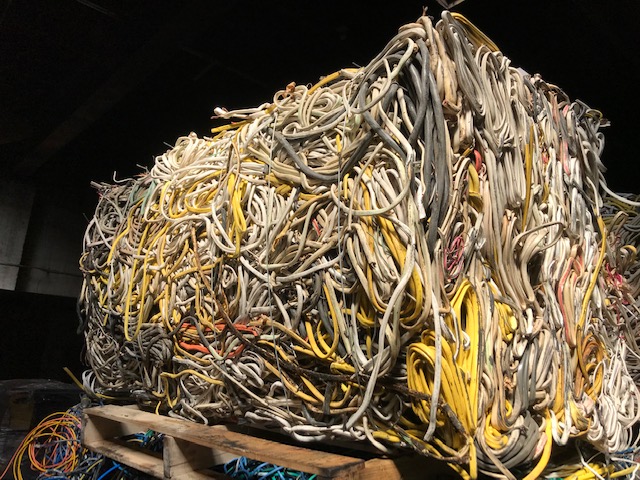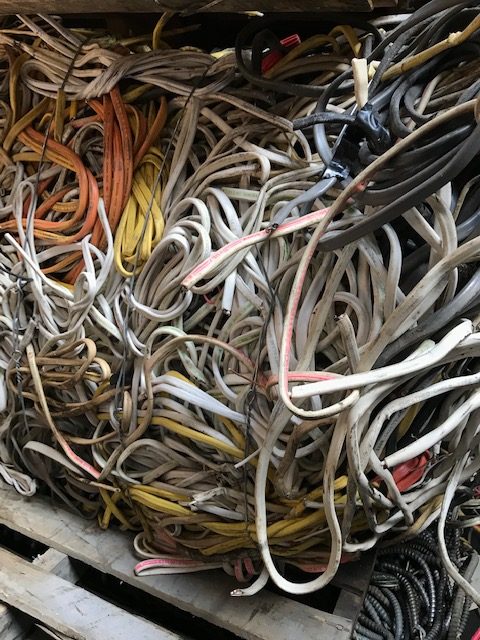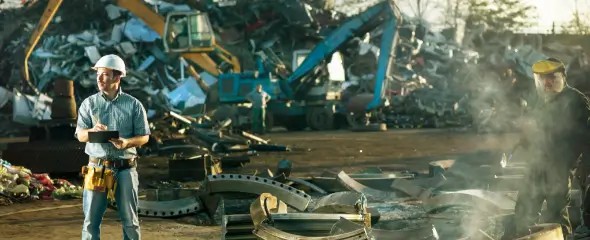
Today, due to their function & resulting high demand, ROMEX and CAT5/6 cables are two of the most commonly used insulated copper wire (ICW) products on the market. They are therefore, two of the most common types of insulated copper wire products sold as scrap to scrap processors such as H&C Metals, Inc. ROMEX is the trade name of an electrical conductor that has non-metallic sheathing (exterior jacket). ROMEX’s primary function is to receive power from the main sources (utilities) and distribute electricity throughout a structure to a residence or a commercial space. CAT 5/6 insulated copper wire is a type of Ethernet cable, found in an enclosed environment where electronic devices such as network servers are connected to other devices so they can communicate with each other.

Understanding ROMEX Insulated Copper Wire Products
ROMEX is a type of insulated commercial copper wire that distributes electricity. To manufacture this type of ICW product, raw copper is first extracted from the earth. Copper ore is then turned into pure copper through various refining and purification processes. Copper ore is crushed into smaller, workable sizes before smelting takes place to extract copper from the ore.
The newly produced pure copper which is an excellent conductor of electricity is then manufactured to produce new copper-based products including single copper strands; the primary material used to make ROMEX wire. Romex is the most commonly used electrical wire for power transmission in a house or commercial building. It is hidden within the walls of a house or a commercial structure which powers light switches and other electrical receptacles (for plugs, etc.). Romex typically has a white or yellow plastic exterior insulation (jacket) and contains two or three interior plastic insulated conductors (wires) and an uninsulated ground wire. The most common Romex has two strands and a ground. The great benefit of Romex is that it is safe to use in a home. It is designed so that the exterior wire jacket is flame-resistant & moisture-resistant & is therefore also permitted in damp environments, such as basements.
The copper wire in Romex is graded as high grade # 1 copper which accounts for an average of between 62 and 64 percent copper recovery. The recovery will vary with the number of copper strands it has but usually, scrap ROMEX is sold at a high price. Romex usually generates bare copper, which is a high grade copper without any plating. The cloth-jacketed Romex, which is an older production type and frequently has tin-plated copper conductors has a recovery rate of an estimated 48% copper.
The great thing about ROMEX cables is that they can be recycled and repurposed. Once they are sent to scrap recyclers such as H&C Metals, these scrap insulated copper wire products are processed into bales and prepared to be shipped to the next step in the recycling process, i.e., chopping machines, which separate the plastic jacket from the copper. The resulting clean copper wire is shipped to a copper smelting company which melts & pours the metal into molds to make ingots (a cast shape suitable for further processing). These ingots are then sold to other companies that will re-melt them and pour the molten cooper into new molds to manufacture new products.
Understanding CAT5/6 Communication Wiring Products
CAT5/6 ICW is a type of globally used communication data cable which functions as the means for connecting devices to networks, including connecting to the Internet. The “CAT” refers to the category of fast Ethernet cables which these belong to. These cables contain four pairs of thin gauged, individually insulated solid copper strands. The number associated with “CAT” indicates the manufactured specifications of the cable. The higher the number (“5” or “6”) the faster the download speed & better connections. CAT5 wire is a standard Ethernet cable built primarily for computer networks & has other applications such as for telephones & video. Today, CAT6 is the default cable for most commercial & office network installations. These cables offer a good balance of distance and speed, as well as gigabit connections of up to 100m. In addition, CAT6 cables feature a more robust sheathing for crosstalk reduction.
CAT5/6 are the most commonly used Ethernet cables in households & among the preferred choices for companies due to the prices they are sold at. They remain the most cost effective options for networking cables.
CAT5/6 wire products sold for recycling are processed similarly to ROMEX, e.g., in bales.
When Do CAT5/6 and ROMEX Insulated Copper Wiring Become Scrap Metals?
For CAT5/6 cable, there is a shelf life for these ICW products due to the growth of wireless communication technologies. As technology changes, hubs, switches, and routers will be upgraded. This means that cabling will also need to be replaced to improve overall performance. Like most cables, CAT5/6 cables will wear and tear overtime.
During the installation of Romex in new houses and buildings, there is the potential to have excess Romex not installed, which will result in Romex scrap. Romex can also be one of many scrap items generated as a result of demolition projects, when either a structure is knocked down to the foundation or its interior is reconfigured due to its new architectural design. Due to the fact that Romex delivers electrical power throughout a structure & is hidden within walls, building code prohibits Romex from being spliced together in an effort to potentially reuse it. Therefore, new insulated copper wire must be installed after the older wire is removed.
H&C Metals buys all type of ROMEX and CAT5/6 insulated copper wire by the pound daily. If you are considering selling scrap ICW products, keep in mind that copper prices are influenced by market volatility and can fluctuate daily based upon supply, demand and several other factors.
If you have any questions, please call +(973) 937-8917 or contact us here.


